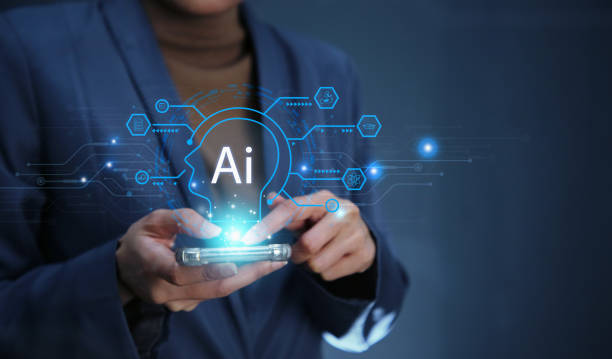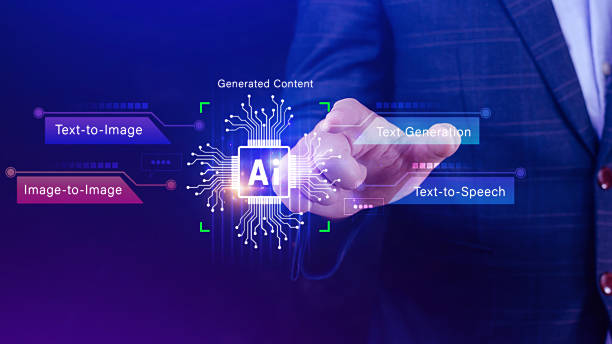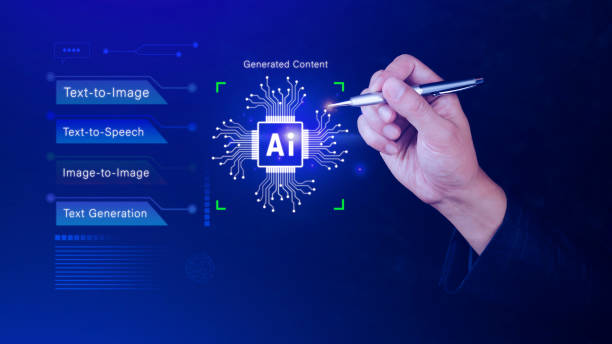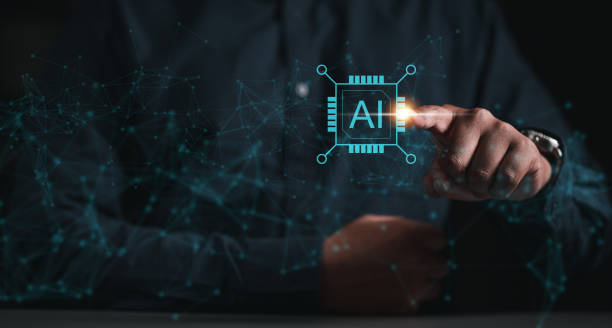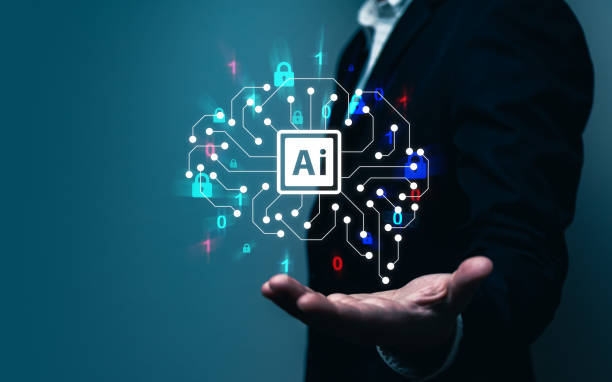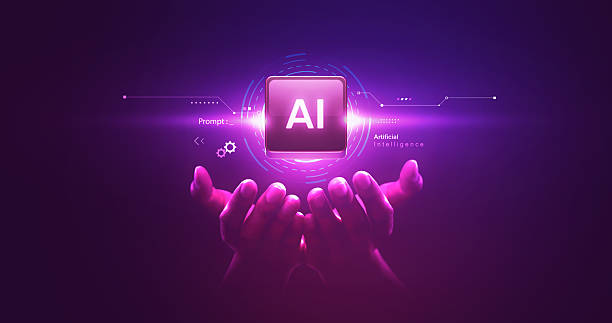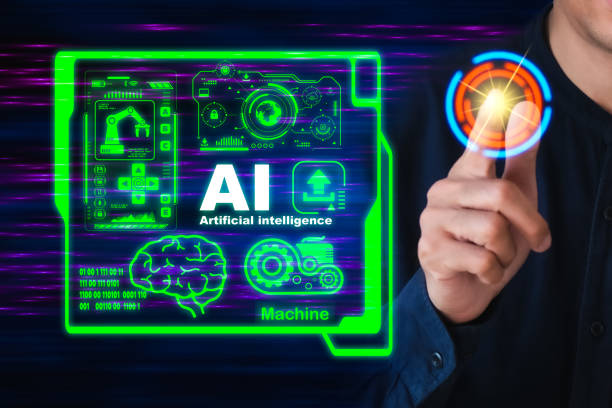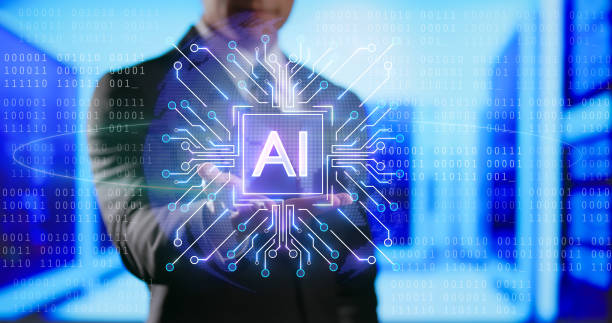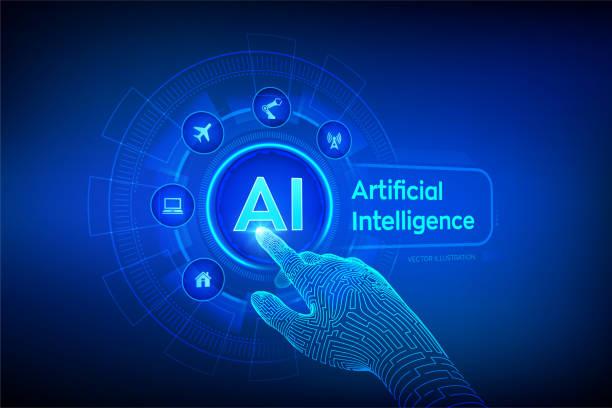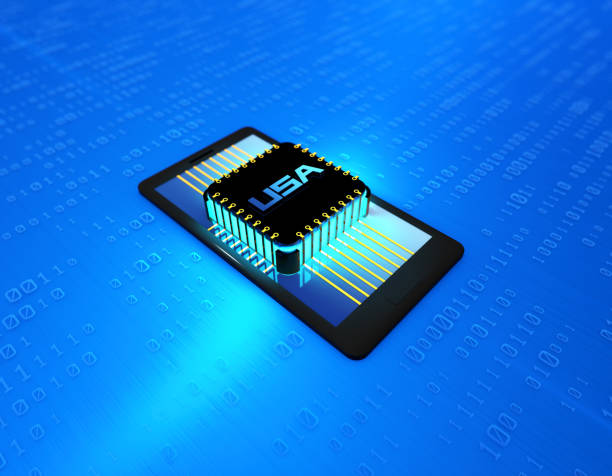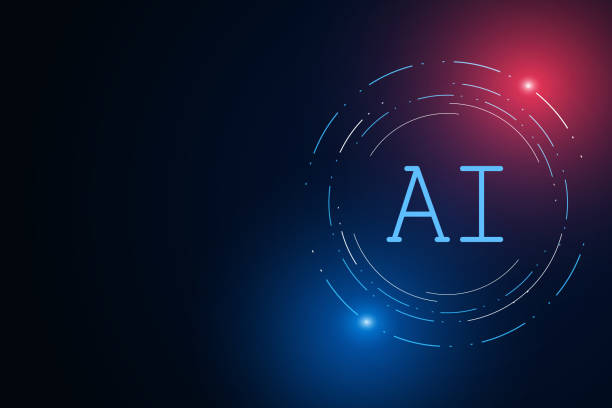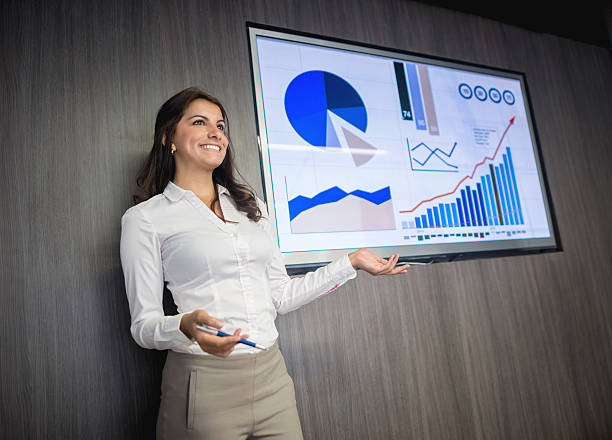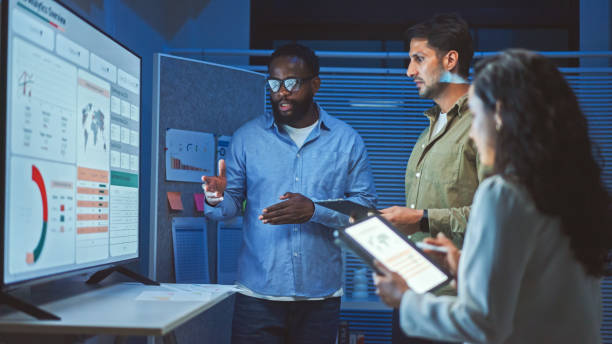What is an Artificial Intelligence Robot and What are its Applications?
#Artificial_Intelligence_Robot refers to a combination of robotics and artificial intelligence, in which robots, using artificial intelligence algorithms, are capable of performing complex tasks and making independent decisions.
These robots can understand their surroundings, learn, and act based on the information obtained.
Artificial intelligence enables robots to react in different situations without the need for precise programming for each situation and adapt to changes.
The applications of artificial intelligence robots are very broad and include fields such as industry, medicine, customer service, education, and even entertainment.
In industry, these robots can perform dangerous or repetitive tasks, in medicine they can assist surgeons, in customer service they can answer questions, in education they can help with teaching, and in entertainment they can play various roles.
With technological advancements, it is expected that artificial intelligence robots will play a more important role in our daily lives and help solve various challenges.
Are you worried about the low conversion rate of your online store and not achieving your desired sales?
Rasaweb is your specialized solution for having a successful online store.
✅ Significant increase in conversion rate and sales
✅ Professional and user-friendly design to satisfy customers
⚡ Ready for a transformation in online sales? Get a free consultation!
Main Components of an Artificial Intelligence Robot
An artificial intelligence robot consists of several main components, each of which plays an important role in the overall function of the robot.
These components include: 1.
**Sensors**: Sensors are tools that collect information from the surrounding environment.
This information can include images, sounds, temperature, pressure, and other sensory data.
2.
**Processors**: Processors are responsible for processing the information collected by the sensors.
This processing includes analyzing data, recognizing patterns, and making decisions.
3.
**Artificial Intelligence Algorithms**: Artificial intelligence algorithms are software that allows the robot to learn, reason, and make decisions.
These algorithms can include neural networks, machine learning algorithms, and other artificial intelligence techniques.
4.
**Motors and Actuators**: Motors and actuators are responsible for moving the robot and performing physical tasks.
These components can include electric motors, hydraulic pumps, and other mechanical devices.
5.
**Power Source**: The power source provides the energy needed for all components of the robot to function.
This source can include batteries, solar cells, or other energy sources.
6.
**Control Software**: The control software is responsible for coordinating all components of the robot and executing commands.
This software can include the robot’s operating system, hardware drivers, and application programs.
By combining these components, an artificial intelligence robot is capable of performing various tasks and interacting with its surrounding environment.
Click here to preview your posts with PRO themes ››
Machine Learning and its Role in the Development of Artificial Intelligence Robots
Machine learning is one of the most important branches of artificial intelligence and plays a vital role in the development of artificial intelligence robots.
Machine learning allows robots to learn from data and improve their performance without the need for precise programming for each situation.
There are different types of machine learning algorithms, each suitable for a specific type of task.
Some of the most common algorithms include: 1.
**Supervised Learning**: In this type of learning, the robot is trained using labeled data.
For example, if we want to train a robot to recognize objects, we can show it a set of images along with their corresponding labels (such as “car”, “tree”, “human”).
2.
**Unsupervised Learning**: In this type of learning, the robot is trained using unlabeled data.
The robot must automatically recognize patterns and structures in the data.
3.
**Reinforcement Learning**: In this type of learning, the robot learns by trial and error.
The robot performs an action and receives a reward or penalty based on the outcome.
The robot tries to improve its performance by performing actions that result in the most reward.
Using these algorithms, artificial intelligence robots can perform complex tasks such as facial recognition, voice recognition, automatic navigation, and playing games.
| Learning Type | Description | Example |
|---|---|---|
| Supervised Learning | Training with labeled data | Object recognition in images |
| Unsupervised Learning | Training with unlabeled data | Clustering customers based on buying behavior |
| Reinforcement Learning | Learning through trial and error | Playing games |
Sensors and Their Role in Intelligent Robots
Sensors are vital components of intelligent robots that allow them to communicate with the world around them and gather the information needed for decision-making.
Sensors can measure various information, including light, sound, temperature, pressure, distance, and position.
There are different types of sensors, each designed for a specific application.
Some of the most common sensors include: 1.
**Vision Sensors**: These sensors use cameras to capture images and videos.
Robots can use these images to recognize objects, faces, and movements.
2.
**Sound Sensors**: These sensors use microphones to record sounds.
Robots can use these sounds to recognize speech, identify noise, and determine the direction of sound.
3.
**Temperature Sensors**: These sensors measure the temperature of the environment.
Robots can use this information to adjust their temperature, detect fires, and control industrial processes.
4.
**Pressure Sensors**: These sensors measure pressure.
Robots can use this information to control pressure in hydraulic systems, detect gas leaks, and measure water depth.
5.
**Proximity Sensors**: These sensors detect the presence of objects near the robot.
Robots can use this information to avoid collisions with obstacles, detect the presence of people, and activate devices.
Using these sensors, intelligent robots can move independently in complex environments, interact with humans, and perform various tasks.
Are you tired of your online store having visitors but no sales? Rasaweb solves your main problem by designing professional online stores!
✅ Significant increase in sales with targeted design
✅ Flawless user experience for your customers
⚡ Get a free consultation!
Current Challenges and Limitations of Artificial Intelligence Robots
Despite the remarkable progress in the field of artificial intelligence robots, there are still several challenges and limitations that prevent the wider use of this technology.
One of the most important challenges is **hardware limitations**.
Artificial intelligence robots require powerful processors, high memory, and precise sensors, all of which are expensive and bulky.
In addition, the **energy consumption** of artificial intelligence robots is also a significant challenge.
Robots that require batteries must be able to operate for a long time without needing to be recharged.
Another challenge is **software limitations**.
Artificial intelligence algorithms still cannot fully understand the complexities of the real world.
Robots may make mistakes in unexpected or new situations and may not be able to function properly.
Also, **ethical issues** are one of the important challenges in the field of artificial intelligence robots.
Robots should be designed not to follow illegal or unethical commands and to respect people’s privacy.
Finally, **security issues** are also a serious challenge.
Artificial intelligence robots may be subject to cyberattacks and their control may be taken over by hackers.
To address these challenges, there is a need for more investment in research and development, collaboration between experts in various fields, and the development of appropriate laws and regulations.
The use of artificial intelligence robots in the medical industry is increasing.
The Future of Artificial Intelligence Robots and Their Impact on Societies
The future of artificial intelligence robots is very bright and full of potential.
With technological advancements, it is expected that artificial intelligence robots will play a more important role in our daily lives and help solve various challenges.
In the future, robots may be widely used in areas such as elderly care, education, transportation, and manufacturing.
Artificial intelligence robots can help seniors live in their homes and benefit from medical and social care.
In education, robots can act as private tutors and teaching assistants and help students learn at their own pace.
In transportation, robots can control self-driving cars and reduce traffic.
In manufacturing, robots can perform repetitive and dangerous tasks and increase productivity.
However, the development of artificial intelligence robots can also pose challenges.
One of the most important challenges is **the impact of automation on the labor market**.
With humans being replaced by robots, many people may lose their jobs.
To address this challenge, careful planning and investment in training and retraining are needed.
Also, the widespread use of artificial intelligence robots can create **new ethical and social issues** that need to be addressed.
Case Study of Artificial Intelligence Robots in Industry
Artificial intelligence robots are currently used in various industries and have a significant impact on productivity, quality, and safety.
One of the most common applications is **the use of robots in production lines**.
Robots can perform repetitive and tedious tasks with high accuracy and speed.
For example, in the automotive industry, robots can weld, paint, and assemble car parts.
In the electronics industry, robots can place small parts with high precision on printed circuit boards.
In addition, robots can also be used in **warehouses and distribution centers**.
Robots can pick goods from shelves, pack them, and load them.
The use of robots in warehouses can increase the speed and accuracy of operations and reduce costs.
Artificial intelligence robots also have many applications in the **agricultural** industry.
Robots can harvest crops, remove weeds, and irrigate the land.
The use of robots in agriculture can increase productivity and reduce the need for human labor.
In the **mining** industry, robots can work in dangerous and inaccessible environments.
Robots can explore mines, extract minerals, and transport explosives.
The use of robots in mining can increase the safety of workers and reduce costs.
| Industry | Application of Artificial Intelligence Robots | Benefits |
|---|---|---|
| Automotive | Welding, painting, assembly | Increased speed, accuracy, and quality |
| Electronics | Placing components on printed circuit boards | High accuracy, reduced errors |
| Agriculture | Harvesting crops, removing weeds, irrigation | Increased productivity, reduced need for human labor |
Artificial Intelligence Robots in Medicine and Healthcare
Artificial intelligence robots are transforming the medical and healthcare industry.
Robots can be used in various fields, including surgery, disease diagnosis, patient care, and pharmaceuticals.
In surgery, robots can help surgeons perform complex operations with greater precision and finesse.
Robots can reduce hand tremors, provide a better view of the surgical site, and facilitate access to hard-to-reach areas.
In disease diagnosis, robots can analyze medical images and detect signs of disease.
Robots can help radiologists quickly and accurately review large volumes of images and provide more accurate diagnoses.
In patient care, robots can help patients take their medications, perform rehabilitation exercises, and communicate with their families and friends.
Robots can help nurses reduce their workload and spend more time caring for patients.
Artificial intelligence robots also have many applications in pharmaceuticals.
Robots can discover new drugs, optimize drug production processes, and produce personalized medicines.
The use of robots in pharmaceuticals can increase the speed and accuracy of the drug discovery process and reduce costs.
Does your current corporate website present a worthy image of your brand and attract new customers?
If not, turn this challenge into an opportunity with Rasaweb’s professional corporate website design services.
✅ Dramatically improves your brand’s credibility and image.
✅ Paves the way for attracting new leads and customers.
⚡ Contact Rasaweb now for a free, expert consultation!
Ethical Considerations in the Design and Use of Artificial Intelligence Robots
With the increasing use of artificial intelligence robots, important ethical considerations arise in the design and use of this technology.
One of the most important considerations is **accountability**.
If an artificial intelligence robot causes harm, who will be responsible? Will the robot manufacturer, the robot user, or the robot itself be responsible? To answer these questions, there is a need to develop appropriate laws and regulations.
Another ethical consideration is **privacy**.
Artificial intelligence robots can collect a lot of information about people.
This information can include personal information, financial information, and health information.
To protect people’s privacy, there is a need to develop laws that regulate how this information is collected, used, and stored.
A third ethical consideration is **discrimination**.
Artificial intelligence algorithms may be trained on historical data that contains racial, gender, or other types of discrimination.
To prevent discrimination, it is necessary to ensure that the training data is fair and non-discriminatory.
A fourth ethical consideration is **transparency**.
The decisions made by artificial intelligence robots should be explainable and understandable.
To increase transparency, there is a need to develop algorithms that can explain how they make decisions.
Given these ethical considerations, there is a need for collaboration between experts in various fields, including engineers, computer scientists, lawyers, and philosophers, to design and use artificial intelligence robots responsibly.
How to Build an Artificial Intelligence Robot: A Step-by-Step Guide
Building an artificial intelligence robot is a complex and multi-stage process that requires knowledge and skills in various fields, including robotics, artificial intelligence, and programming.
Here is a step-by-step guide to building an artificial intelligence robot: 1.
**Define the Goal**: Before you start, you need to specify your goal for building the robot.
What should your robot do? What problems should it solve? Defining the goal will help you choose the right components and algorithms.
2.
**Choose Hardware**: The robot’s hardware includes sensors, processors, motors, and a power source.
You need to choose hardware that is compatible with your goal and has enough processing power.
3.
**Choose Software**: The robot’s software includes the robot’s operating system, hardware drivers, and artificial intelligence algorithms.
You need to choose software that is compatible with your hardware and allows you to implement the desired algorithms.
4.
**Collect Data**: To train the artificial intelligence algorithms, you need to collect appropriate data.
The data can include images, sounds, text, or other types of data.
You need to collect data that is representative of the environment and tasks that the robot will face.
5.
**Train the Algorithm**: After collecting the data, you need to train the artificial intelligence algorithms.
To do this, you can use machine learning software such as TensorFlow or PyTorch.
6.
**Test and Evaluate**: After training the algorithms, you need to test the robot and evaluate its performance.
If the robot is not working properly, you need to modify the algorithms and retrain them.
7.
**Continuous Improvement**: Building an artificial intelligence robot is an iterative process.
You need to continuously test the robot, evaluate its performance, and improve the algorithms.
Proper use of artificial intelligence robots is very important for improving the industry.
Frequently Asked Questions
| Question | Answer |
|---|---|
| What is an artificial intelligence robot? | It is a robot that uses artificial intelligence capabilities to understand the environment, reason, learn, and make decisions in order to perform complex tasks independently. |
| What is the main difference between a regular robot and an artificial intelligence robot? | Artificial intelligence robots can learn and adapt to their environment, while regular robots usually operate based on fixed and pre-determined plans. |
| In what areas are artificial intelligence robots used? | In areas such as industry (production lines), medicine (robotic surgery), services (customer support, smart vacuum cleaners), exploration (space and underwater), and entertainment. |
| How do artificial intelligence robots learn? | They acquire new skills through machine learning algorithms (Machine Learning) and deep learning (Deep Learning), by analyzing big data and identifying patterns. |
| Can artificial intelligence robots have emotions? | Currently, no. They can identify or simulate emotions, but they do not have the real experience of emotions like humans. |
| What are the most important advantages of using artificial intelligence robots? | Increased productivity, reduced human error, performing dangerous or repetitive tasks, and providing new and efficient services. |
| What challenges exist in the development of artificial intelligence robots? | The need for abundant and high-quality data, the complexity of algorithms, ethical issues, cybersecurity, and the high cost of research and development. |
| Are artificial intelligence robots dangerous to humans? | By following safe design principles and ethical regulations, no. Concerns are more related to social and economic impacts, such as changes in the labor market. |
| What is an example of an artificial intelligence robot in everyday life? | Smart vacuum cleaner robots (like Roomba) that automatically map and clean the house, or smart voice assistants (like Siri and Alexa). |
| How is the future of artificial intelligence robots predicted? | They are expected to become smarter, more autonomous, and capable of more complex interactions with humans, playing a more prominent role in industry, medicine, transportation, and daily life. |
And other services of Rasa Web Advertising Agency in the field of advertising
Intelligent Digital Branding: A new service to increase customer attraction through custom programming.
Intelligent Direct Marketing: An effective tool for managing campaigns with the help of attractive user interface design.
Intelligent Link Building: A professional solution for digital branding with a focus on precise audience targeting.
Intelligent Digital Branding: A combination of creativity and technology to increase website visits by using real data.
Intelligent Conversion Rate Optimization: Designed for businesses that are looking to grow online through custom programming.
And more than hundreds of other services in the field of internet advertising, advertising consulting, and organizational solutions
Internet Advertising | Advertising Strategy | Advertorial Report
Resources
Introduction to Artificial Intelligence: The Ins and Outs of the AI World in 2024
,What is Artificial Intelligence? | All About AI
,What is Artificial Intelligence? A Comprehensive Introduction, Applications, and Future of Artificial Intelligence
,The Future of Artificial Intelligence
? Are you ready to transform your business in the digital world? Rasaweb, with its expertise in secure website design and comprehensive digital marketing services, is your trusted partner for reaching the peaks of success.
📍 Tehran, Mirdamad Street, next to the Central Bank, South Kazerun Alley, Ramin Alley No. 6
“`

